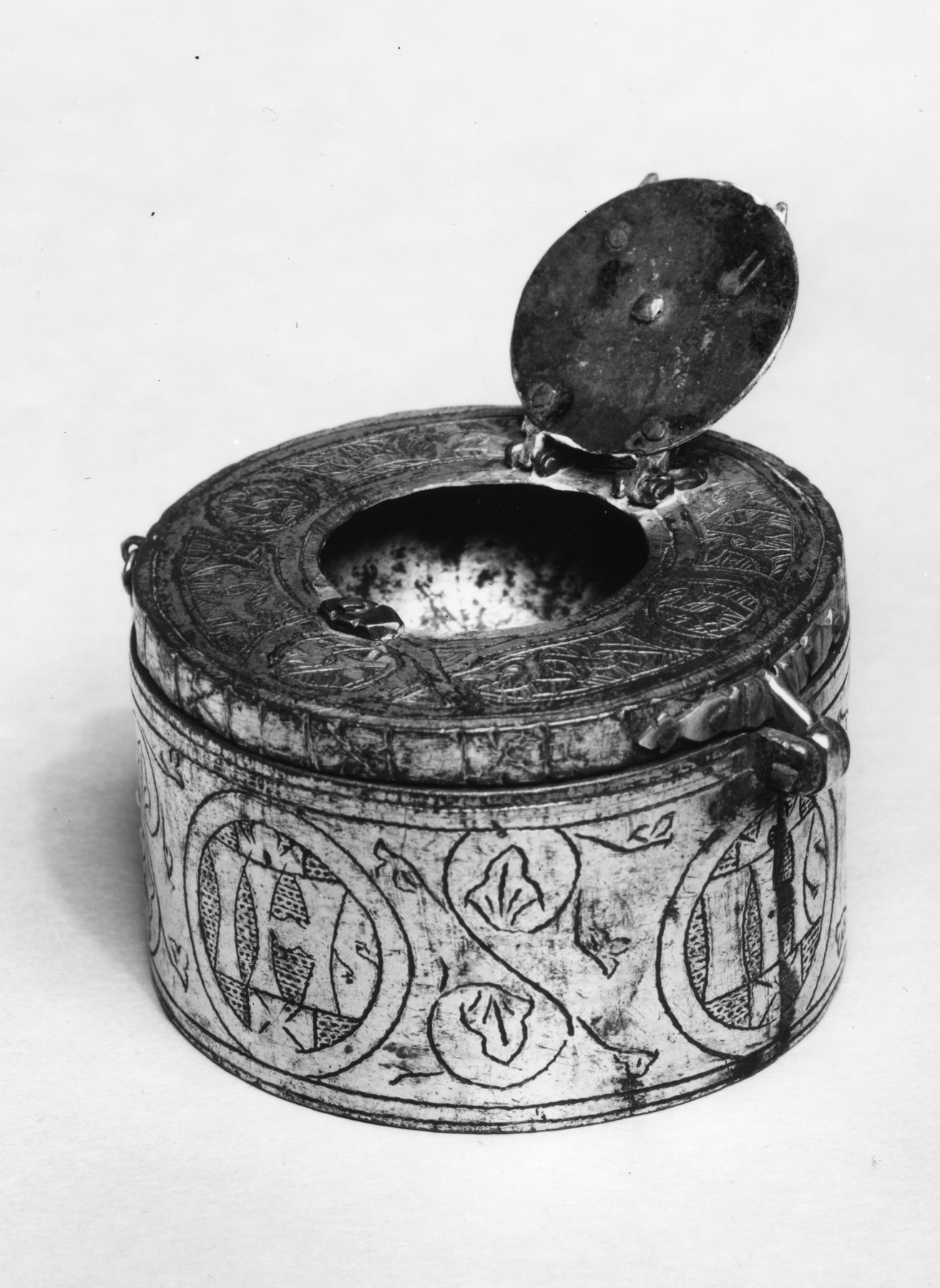Pyx
(Medieval Europe )
All Christians in the Middle Ages considered the bread sanctified during the Mass to be the actual body of Christ. The repeated monogram IHS (for the medieval Latin Ihesus, "Jesus") on this box attests to this belief. Known as pyxes, such boxes were used by the faithful to receive pieces of the Communion bread after Mass. They would partake of it later, usually in the family chapels that many wealthy laymen maintained in their homes.
Inscription
Provenance
Provenance (from the French provenir, 'to come from/forth') is the chronology of the ownership, custody, or location of a historical object. Learn more about provenance at the Walters.
Raoul Heilbronner, Paris [date of acqusition unknown], by purchase; Henry Walters, Baltimore [date of acquisition unknown], by purchase; Walters Art Museum, 1931, by bequest.
Exhibitions
| 2008-2009 | Realms of Faith: Medieval and Byzantine Art from the Walters Art Museum. Museum of Biblical Art, New York; Colby College Museum of Art, Waterville; Joslyn Art Museum, Omaha. |
Conservation
| Date | Description | Narrative |
|---|---|---|
| 12/10/1958 | Examination | examined for condition |
Geographies
France (Place of Origin)
Measurements
H: 1 5/8 x W: 2 1/2 in. (4.1 x 6.3 cm)
Credit Line
Acquired by Henry Walters
Location in Museum
Not on view
Accession Number
In libraries, galleries, museums, and archives, an accession number is a unique identifier assigned to each object in the collection.
In libraries, galleries, museums, and archives, an accession number is a unique identifier assigned to each object in the collection.
53.11


